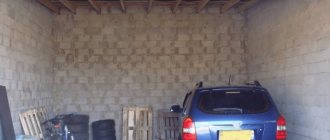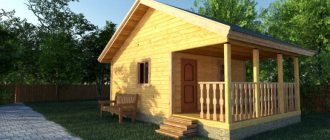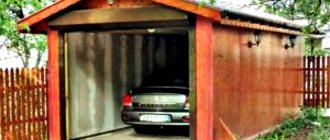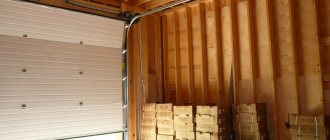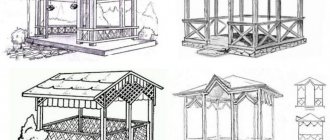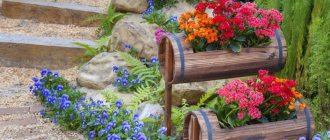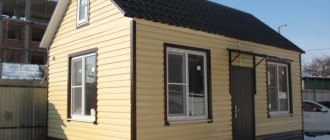Review author: Terrari School of Design
A pond will give a picturesque natural look to any area. It can be either natural or decorative. A pond in a dacha can be formed by rain, groundwater and melt water.
If there is a depression on the site where water constantly collects, then you can turn this inconvenience into an advantage, fence the edges of the natural reservoir with stones or other material, plant water-loving plants nearby and a wonderful decorative element is ready.
In addition, on a hot day you can sit by a cool pond by organizing a relaxation area next to it.
Choosing a location for a pond
The choice of location for a reservoir should be approached based on the terrain features. It would be more appropriate to arrange a decorative pond in a low-lying part of the site.
If the pond is planned as a decorative element, then you can place the pond in the garden. The illumination of the water surface matters; the sun must warm the water, but not more than six hours a day, otherwise the water may bloom.
Natural shade is created by the vegetation on the site; if there is little vegetation, then small trees and shrubs should be planted along the edges of the artificial reservoir.
Trees with a strong root system cannot be used for this purpose, as they can, over time, destroy the edges of the reservoir. This is a photo of a decorative pond.
Stage 2. Deciding on the material
There are quite a lot of materials that can serve as the basis for a decorative pond, but the most popular of them are the options below.
- A ready-made plastic mold, for which you only need to dig a hole of appropriate depth. A simple and fast method that does not require large financial costs. Its only drawback is that it is not always possible to give the reservoir the desired shape.
Ready-made plastic molds - A durable (often polyvinyl chloride) film 0.5 mm thick is ideal for a small pond. For larger structures, it is advisable to use denser material. What is typical is that when using film, the pond can be given almost any shape.
Due to the fact that the construction of a decorative pond from a mold is unlikely to cause any difficulties, we will consider in more detail the second construction option.
Prices for ready-made ponds and bowls for ponds and fountains
Ready-made ponds and bowls for ponds and fountains
The purpose of creating a reservoir
Before starting to implement plans to create a reservoir, it is necessary to determine for what purposes it will be used. If a pond is needed simply as a decorative element to give the area a natural look, then it can be made small in any shape: oval, round, with bends, square, elongated, rectangular.
For fish breeding, a reservoir of thirty to fifty square meters, two meters deep, will be sufficient. A pond or swimming pool can be made in various shapes and sizes.
Butyl rubber as insulation
Undoubtedly, this is one of the most optimal options for organizing and strengthening a pond.
If the chosen option involves a rocky bottom and greater depth, then experts recommend using a membrane made of this material.
The service life of the structure in this case can reach over fifty years. In addition, an indisputable advantage is the fact that the material can withstand sudden temperature changes.
DIY artificial pond
You can make an artificial pond with your own hands, following certain recommendations for constructing decorative ponds. When a location for a future reservoir has been chosen, work on its creation must begin by selecting the materials that will be used. These can be: plastic, concrete, film, PVC, polyethylene, butyl rubber.
To create a small pond (up to five square meters), a plastic container is perfect. It is installed at the bottom of the prepared pit and filled with water. Butyl rubber is considered the most durable film, which is ideal for creating an artificial pond.
Using dry lime or sand, you need to mark the boundaries of the future pond, along which to dig a shallow ditch. Then, having marked the contours, dig a pit of the required size.
Using a rope and tape measure, you can determine the required size of the film, to which you need to add fifty centimeters so that the film can be fixed along the banks of the reservoir.
Place a layer of sand, a layer of non-woven fabric or geotextile at the bottom of the pit. Cover the pit with film and carefully feed water into the pit. In a few days it will be possible to decorate the banks of the pond.
Plastic
Due to the increased popularity of country pools, the demand for suitable materials has increased. And companies that work with plastic began to produce ready-made monolithic structures.
This method will help you quickly organize a space for relaxation, but the material has a limited service life. Each manufacturer has its own, usually a figure from 20 to 50 years. To install such a structure, you need to dig a hole of suitable size. After installing a plastic pool, you need to fill the voids with sand.
Pond made of concrete
A concrete pond is a more expensive but durable option. Based on the size and shape of the future reservoir, you need to dig a pit, having previously made markings.
The walls of the pit can be narrowed towards the bottom, or the future reservoir can be made of an even geometric shape. In this case, it is necessary to clear the walls and bottom of the pit from plant roots and large stones. Lay a film over the entire volume of the pit, and then install a reinforcing mesh.
Before filling the pit with concrete, it is necessary to install a drain pipe and determine the location for the cable if you plan to install a filter. The concrete must be of high grade.
After the concrete has hardened, the pit must be treated with mastic or special paint for waterproofing. After which you can fill the finished pit with water and decorate it.
Stage 3. Prepare consumables
The work will require:
- PVC film;
- roofing felt;
- round stones;
- rope;
- stone slabs;
- shovel;
- sand;
- bricks;
- fine gravel.
Having prepared everything you need, we proceed to the next stage.
Diagram of a pond with waterproofing
Artificial pond care
To prevent a pond from turning into a swamp, it needs careful care, which includes a number of rules:
- As soon as the ice melts after the winter frosts, you need to inspect the reservoir: what is the condition of the filters and fish, if any, and what is the condition of the banks.
- Carefully inspect the bottom of the reservoir for leaks.
- In the spring, it is necessary to remove old rotting foliage; you can plant new plants along the banks of the reservoir.
- In summer, monitor the water level and add if necessary.
- In autumn, trim perennial plants along the banks of the reservoir.
- Periodically clear the pond of leaves and debris that may be caused by the wind.
aquatic plants
No. Types of work Unit. change Price (RUB) Comments 4.1. Planting For the project from 50,000 The project includes: • Selection of plant species; • Calculation of the optimal quantity; • Plants; • Containers with the necessary amount of nutrients for optimal growth; • Planting on site; • Consultation on content. The cost of plants is paid separately.DIY artificial waterfall
You can make not only a pond or a swimming pool yourself, but also an artificial waterfall that can be added to a pond. In any case, you need a bowl to collect the water. A ladder (cascade of a waterfall) should approach the bowl. Fill the ladder and bowl with concrete or lay down a film, line the edges of the waterfall with stones of different sizes.
The stones must be bonded together with concrete. Next, you need to install a pump for the waterfall, which is selected according to two criteria: the height to which it can raise water and its performance. Immerse the pump in a bowl filled with water.
There are different types of waterfalls: dry, the bowl for collecting water is disguised in the ground, thus creating the impression that the water running down the ledges went into the ground; a waterfall with a flat stream, achieved by installing a wide tray at the top; decorative waterfalls, which are made from flower pots and clay jugs. There are a lot of ideas for creating waterfalls with your own hands.
Construction works
No. Types of work Unit. change Price (rub.) Comments 2.1. Formation of a pond profile 1 sq.m 300 2.2. Manual excavation 1 cubic meter from 1,000 2.3. Mechanized excavation 1 shift from 10,000 Mini-excavator 2.4. Installation of a protective layer 1 sq.m 50 Geotextiles 2.5.Laying a film from 5.00025% of the cost of butyl rubber 1 mm thick 2.6.Gluing seams 1 m 1,000 2.7. Spraying with “liquid rubber” 1 sq.m. from 1.200 From 100 sq.m., with a layer of 3-4 mm with a protective device layer and cost of materials. 2.8.Design of a coastline 1 sq.m from 800 2.9.Construction of a waterfall 1 linear meter from 10,000 2.10.Construction of a stream 1 linear meter from 5,000 2.11.Construction of a bio-plateau 1 sq.m from 3,000 2.12.Paving the bottom with stone 1 sq.m .m 1,000 2.13.Designer's supervision Departure 5,000 Departure of a specialist up to 50 km from the Moscow Ring Road. Round trip travel and guaranteed 2 hours of work on site with the customer’s workforce (setting tasks, monitoring work progress, confirming the work schedule)Vegetation along the banks of the reservoir
Plants that absorb a lot of water are used to frame the banks of artificial reservoirs. These include: marigold, buttercup. little tea, astilbe, with bright flowers and a long flowering period, knotweed, raspberry, fern and sedge visually increase the size of the reservoir, miscanthus with lush green caps.
Plants can be planted both in the ground and in pots that can be placed along the banks. Popular aquatic plants are: egg capsule, duckweed, reed, water lily, swamp grass and water star will be needed in ponds where fish are found.
This is how we work
Contact us – initial consultation
drawing up a preliminary commercial offer
Departure of a specialist for the following work
– Inspection and measurements; – Consultation with an architect/designer – Photo and video recording; – Drawing up technical specifications;
Providing a detailed proposal with an estimate
Concluding an agreement that specifies all the details including deadlines
Construction. From 3 days
